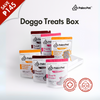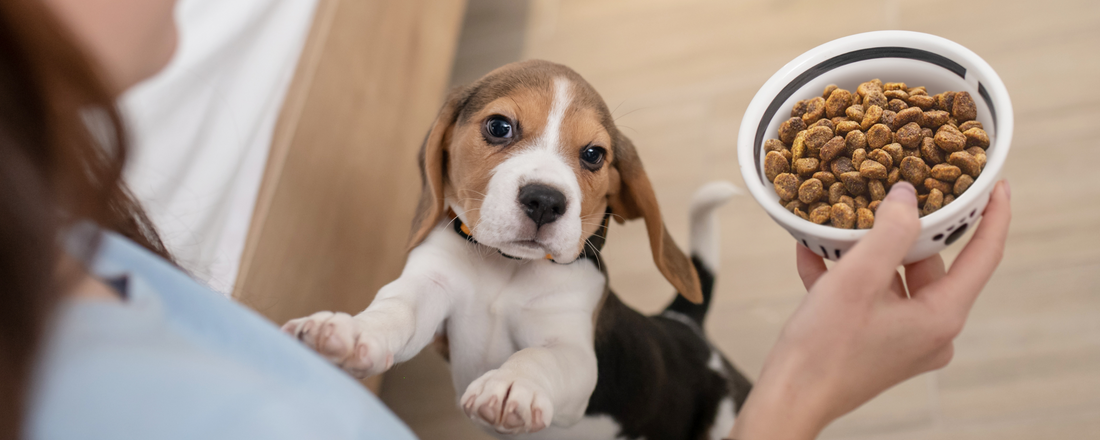Pet nutrition often gets overlooked in favor of convenience. We may not give much thought to what we’re feeding our pets as we scoop food from a bag, but our choices can have lasting effects on their health and well-being.

This article delves into the history of commercial kibble and its impact on pet health, featuring insights from Dr. Alfred de Quiroz, also known as "Doc Bong," a veterinarian with over 26 years of experience. We’ll explore the origins of kibble, how it compares to natural diets, and what the future of pet nutrition may hold.
The Origins of Commercial Kibble

To understand how kibble became a staple in the pet food industry, we need to go back to the 1800s. As Dr. Bong explained, "It started as a biscuit, not as kibble. It was made out of beef, blood, cereals, and corn, essentially to supplement the diet of working dogs." In the early stages, these biscuits were crude by today's standards and far removed from what we now recognize as commercial kibble.
The modern kibble we know today emerged in the 1950s, pioneered by the company Purina, which revolutionized pet food with the extrusion process. "Extrusion is a method that compresses ingredients into small, uniform shapes, which we now call kibble," explains Dr. Bong.

This innovation allowed pet food manufacturers to produce large quantities of food that were easy to store and distribute, thus catering to the convenience needs of pet owners.
Key Differences: Kibble vs. Natural Diets
While kibble has become synonymous with convenience in the pet food world, it’s important to consider how it stacks up against a pet's natural diet. Dr. Bong was quick to point out the inherent differences: "Kibble and natural dog diets are two different things. Kibble is commercially made with many processes involved, and often, the motivation is profit. On the other hand, a natural diet is formulated for the wellness of the dog, much like a home-cooked meal for humans compared to fast food."
The analogy of kibble being the “fast food” of the pet world is not an exaggeration. Much like how fast food for humans is designed to be palatable, inexpensive, and convenient, kibble is formulated in a similar way. "Commercial pet food is often made more palatable by adding fillers and flavorings, making it appealing to dogs but less focused on nutrition," Dr. Bong added.
Why Kibble Remains Popular?
One of the main reasons commercial kibble has become so popular is its convenience. "It's easy to scoop, serve, and store," Dr. Bong said. He emphasized that feeding a pet a natural diet, especially one made from raw or home-cooked ingredients, can be time-consuming."Preparing food for your dog involves cutting vegetables, weighing meat, and ensuring the meal is balanced. It’s much more tedious compared to just scooping out kibble," he added.
But is convenience worth the potential health risks?
Dr. Bong noted that commercial kibble diets, especially those made with low-quality ingredients, can lead to health problems such as obesity, skin issues, kidney problems, and even cancer in some cases. "Much like a fast-food diet in humans, a kibble diet, especially low-grade kibble, can result in high cholesterol, urinary stones, and other serious health conditions," he said.
Premium kibbles often contain higher-quality proteins, more natural ingredients, and fewer fillers. Brands like Orijen and Acana, which focuses on high-quality proteins and limited processing to keep their food as close to a natural diet as possible.
Health Implications of a Kibble-Only Diet
Feeding your pet a low-grade kibble diet can lead to significant health problems, much like a fast-food diet in humans. "You can see issues like high cholesterol, urinary stones, and other metabolic diseases," warned Dr. Bong. He emphasized that while not all kibble is harmful, many low-quality options can contribute to long-term health issues, including kidney and liver problems.

Can Kibble Evolve?
As science advances, pet nutrition is evolving. Dr. Bong expressed optimism about the future of kibble, noting that ongoing research may lead to healthier, more natural options. "In the future, kibble may be made much closer to a natural diet, with fewer fillers and more real meat," he said. The goal, according to Dr. Bong, is to create a kibble that is both affordable and nutritionally balanced, bridging the gap between convenience and health.
Looking toward the future, Doc Bong sees potential for improvement in commercial kibble. "Science is always evolving," he remarked, "and there's a possibility that kibble could become closer to a natural dog food diet." As research continues and companies prioritize better ingredients and processing techniques, kibble could become a more viable option for pet owners who value both convenience and nutrition.
A Balanced Approach: Combining Kibble with Fresh Foods
Given the convenience of kibble, many pet owners may not want to abandon it altogether. However, one potential solution is to combine kibble with fresh, natural foods. This approach allows pet owners to maintain the convenience of kibble while supplementing their pets' diets with whole foods that provide additional nutrients.
"Adding fresh vegetables, lean meats, and other whole foods to your dog's diet can improve their overall health without completely eliminating kibble," Dr. Bong advises. This hybrid approach offers a balanced solution for pet owners who want the best of both worlds—convenience and nutrition.
Conclusion: Striking a Balance in Pet Nutrition
The discussion between commercial kibble and a natural diet for pets is far from simple. While kibble offers undeniable convenience, it often falls short in terms of nutrition, especially when low-grade products are used. However, as Dr. Bong emphasizes, not all kibble is bad. Premium kibbles can provide a healthy option for pet owners who are unable to prepare fresh meals every day.

Key Takeaways
Pet owners need to make informed choices about their pets' diets. Whether they opt for kibble, a natural diet, or a combination of both, understanding the ingredients and potential health impacts is crucial for ensuring their pets' long-term well-being.
In the future, as science and pet food manufacturing continue to evolve, we may see new products that offer the perfect balance between convenience and nutrition. Until then, pet owners should remain vigilant about what they're feeding their furry companions, always striving to provide the best possible care. As Dr. Bong concludes, "At the end of the day, we all want our pets to live long, healthy lives, and that starts with what we put in their bowls."


